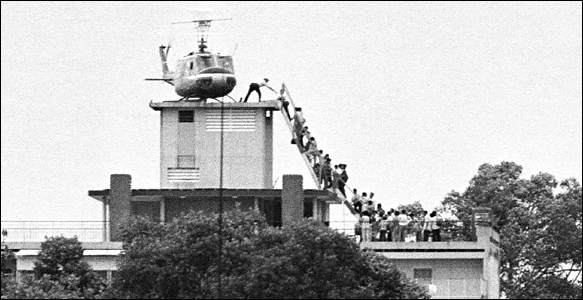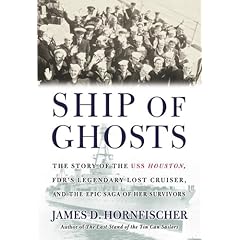Update: See update at the end to get a better picture of the fallout of the new Army Policy on blogging from the Sandbox
———————–
I was in the car driving late into the evening, but I first heard the bad news and an audio clip of Matt of Black Five saying the leadership ordered soldiers to check their blog posts and personal emails with their chain of command. I know it’s not been presented in those terms yesterday and over night (Here’s Matt’s post: “The End of Military Blogging”), mostly it’s a wave of hysteria (and I agree this needs to be raised to the point of the top of the heap), but it requires soldiers to “consult” with their chain of command before posting/sending info.
From Black Five, quoting an email he received from a writer for Wired magazine:
Army Squeezes Soldier Blogs, Maybe to Death
Noah Shachtman Email 05.02.07 | 2:00 AM
The U.S. Army has ordered soldiers to stop posting to blogs or sending personal e-mail messages, without first clearing the content with a superior officer, Wired News has learned. The directive, issued April 19, is the sharpest restriction on troops’ online activities since the start of the Iraq war. And it could mean the end of military blogs, observers say.
[…]
One of the authors at MilBlogs, Army Lawyer, point ot the regulation published doens’t say you can’t blog:
By its terms, the new OPSEC regulation does not require approval of all communications beforehand, rather, the obligation is to consult. But as Noah’s article points out, the proponent doesn’t envision all communications to be monitored nor would it be practical to do so. When a regulation’s proponent gives you that kind of guidance, you hang your hat on it.
But even without that, the guidelines still place the authority (or burden) on the commander. Commanders are as varied as snowflakes. Will some lean too far forward and say “no blogs”? Yes. but they could have done that before. While a commander may technically say “No Myspace” “No Ebay” and “No AKO forum posting” they are not obligated to do so under the regulation and, truth be told, commanders that ARE so lacking in common sense probably have other concerns within their units.
[…]
Army Lawyer brings sanity to the table, and also points out my concern: How will each chain of command member implement this? Some will look at their troops and know they are trustworthy, sane, loyal, sold soldiers, aware that slips not only endanger their lives, but those of comrades in arms, in their units, in their service and in other arms of our combat forces, and will not let things slip. Other commanders will make the “default” decision and say “no more” so they 1) lift a possible time consuming administrative/security burden off their plate, but more likely 2) do it to CYA the situation: “No posts, no risk!”
All that being said and you’re wondering what the terrorist reference is in my title?
I pick up my free copy of USA Today and the headline that is (quite literally) above the fold (The bold print is, the article copy is below) Terrorists not countered on the Web” (titled “Report: Net is key extremist tool” on the “front page” of the online edition – I like that better for a one line synopsis) Key assaults my eyes. We know that, and thanks to General Casey, there is one more weapons we had to take them on, the real daily inputs of soldiers in the sandbox, taken out of the arsenal.
by Mimi Hall
WASHINGTON – Government and community leaders aren’t doing enough to counter media-savvy terrorists from using flashy websites, provocative video games, hip-hop music and gruesome images of bloodied Muslim children to recruit young people online, according to a new report that says the internet may be the extremist’s most powerful frontier.”
[…]
Now, contrast this to the report filed by Major Robbins “Muddy Boots IO (Information Operations): The Rise of the Soldier Blogs” stating thse blogs have a global reach.
[…]
Soldiers understand that the public has become increasingly distrustful of mainstream news, and milblogs are a way to circumvent the media’s power to select news content.
[…]
And that has been a good thing. It equally applies for the bad guys, where the media’b’Allah will choose to possibly not report the beyond the pale horrific activities the terrorists still want the world to see.
Now, possibly, no countering “good” reporting. The only good thing about this news is that I had begun a post a few weeks ago about sitting in a seminar and chafing at the statement of the Army general in charge of public affairs saying we (the room had members of all services in it) had to become experts at public affairs. I thought as a Surface Warfare Officer I had enough to be an expert at, and we were paying “staff corps” officers to be PAOs. At least the time invested in that work will not be lost, now this has come up…
I’m sure the Saturday discussions at the 2007 MilBlogging Conference will be full of this issue.
Update 4/3/2007 Evening:
As I drove today, I wondered if the MilBlog Community reaction (mine included) was a little too shrill and maybe we should take a breathe and use the 24 hour rule. like “we” like to advise others. It would have been good advice, but at least it elicited this response (H/T: Andi):
Fact Sheet
Army Operations Security: Soldier Blogging Unchanged
Summary:
o America’s Army respects every Soldier’s First Amendment rights while also adhering to Operations Security (OPSEC) considerations to ensure their safety on the battlefield.
o Soldiers and Army family members agree that safety of our Soldiers are of utmost importance.
o Soldiers, Civilians, contractors and Family Members all play an integral role in maintaining Operations Security, just as in previous wars.
Details:
• In no way will every blog post/update a Soldier makes on his or her blog need to be monitored or first approved by an immediate supervisor and Operations Security (OPSEC) officer. After receiving guidance and awareness training from the appointed OPSEC officer, that Soldier blogger is entrusted to practice OPSEC when posting in a public forum.
• Army Regulation 350-1, “Operations Security,†was updated April 17, 2007 – but the wording and policies on blogging remain the same from the July 2005 guidance first put out by the U.S. Army in Iraq for battlefield blogging. Since not every post/update in a public forum can be monitored, this regulation places trust in the Soldier, Civilian Employee, Family Member and contractor that they will use proper judgment to ensure OPSEC.
o Much of the information contained in the 2007 version of AR 530-1 already was included in the 2005 version of AR 530-1. For example, Soldiers have been required since 2005 to report to their immediate supervisor and OPSEC officer about their wishes to publish military-related content in public forums.
o Army Regulation 530-1 simply lays out measures to help ensure operations security issues are not published in public forums (i.e., blogs) by Army personnel.
• Soldiers do not have to seek permission from a supervisor to send personal E-mails. Personal E-mails are considered private communication. However, AR 530-1 does mention if someone later posts an E-mail in a public forum containing information sensitive to OPSEC considerations, an issue may then arise.
• Soldiers may also have a blog without needing to consult with their immediate supervisor and OPSEC officer if the following conditions are met:
1. The blog’s topic is not military-related (i.e., Sgt. Doe publishes a blog about his favorite basketball team).
2. The Soldier doesn’t represent or act on behalf of the Army in any way.
3. The Soldier doesn’t use government equipment when on his or her personal blog.
• Army Family Members are not mandated by commanders to practice OPSEC. Commanders cannot order military Family Members to adhere to OPSEC. AR 530-1 simply says Family Members need to be aware of OPSEC to help safeguard potentially critical and sensitive information. This helps to ensure Soldiers’ safety, technologies and present and future operations will not be compromised.
• Just as in 2005 and 2006, a Soldier should inform his or her OPSEC officer and immediate supervisor when establishing a blog for two primary reasons:
1. To provide the command situational awareness.
2. To allow the OPSEC officer an opportunity to explain to the Soldier matters to be aware of when posting military-related content in a public, global forum.
• A Soldier who already has a military-related blog that has not yet consulted with his or her immediate supervisor and OPSEC officer should do so.
• Commands have the authority to enact local regulations in addition to what AR 530-1 stipulates on this topic.
There you have it. Advice: When you feel the urge to “launch,” take a deep breath and see what happens in the morning…












